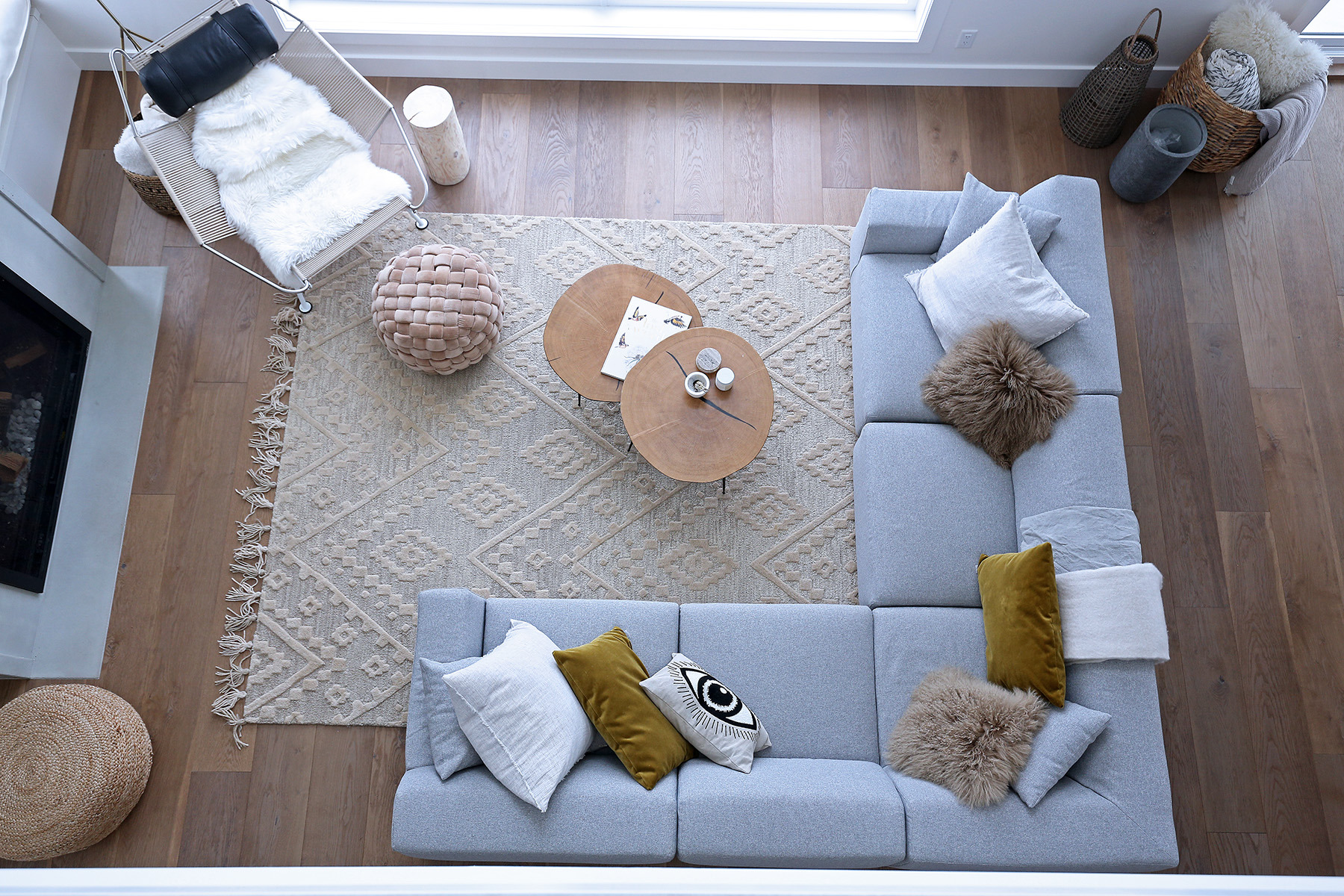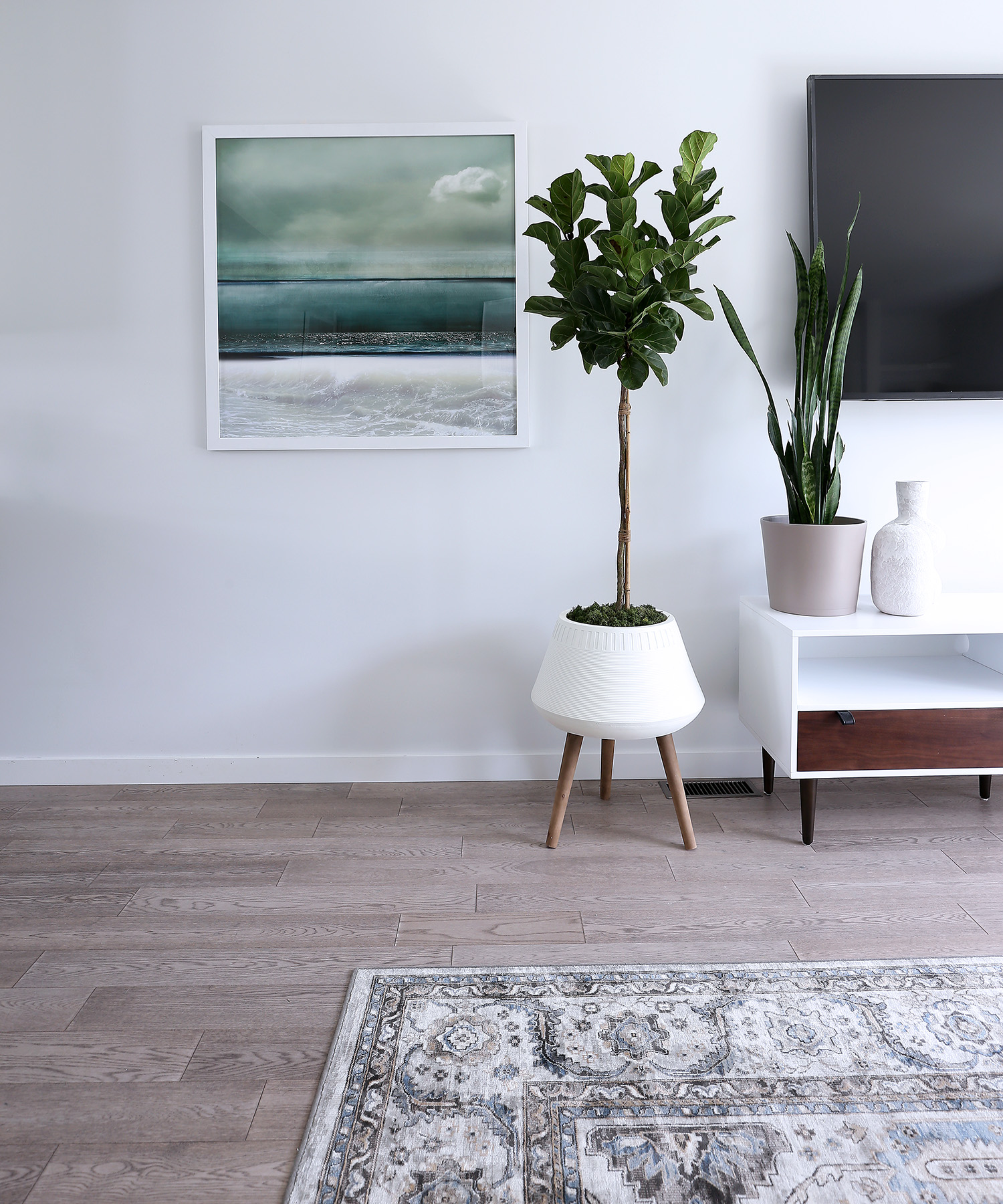 Regardless of what you may have heard, size really does matter. When it comes to our homes, the furniture, fixtures, art and accessories must all work within a specific set of proportions in relation to the user, the room and the other things occupying it. Who knew decorating would be so technical? In fact, when every furnishing is properly scaled, your home will have that coveted custom fit. Here are three critical décor elements where scale really counts.
Regardless of what you may have heard, size really does matter. When it comes to our homes, the furniture, fixtures, art and accessories must all work within a specific set of proportions in relation to the user, the room and the other things occupying it. Who knew decorating would be so technical? In fact, when every furnishing is properly scaled, your home will have that coveted custom fit. Here are three critical décor elements where scale really counts.
Light fixtures are an immediate focal point in a room. Ensure yours are a focus for the right reasons. Proper scale goes a long way toward making the right impression. Unfortunately, light fixtures are mis-measured in more ways than one.
The first measurement to consider is the size of the fixture itself. To determine this, measure the length and width of the room in feet and add the two numbers. The resulting value, expressed in inches, is the ideal size of your light fixture. Let’s put that formula to practice. A room that measures 10 ft. long by 20 ft. wide would require a light fixture that measures 30 inches across.
When choosing a light fixture to hang above a kitchen or dining table, the fixture should measure about ½ to ¾ the width (or diameter) of the table.
This brings us to the second common lighting measuring misstep: the suspension height of the fixture. The rule of thumb is to hang the pendant or chandelier three ft. above a tabletop or counter, and six ft. up from the floor.
Area rugs: they’re more than just something to keep your feet warm. A great rug helps to anchor a room, or an area within a room such as a sitting area. It anchors the eye through colour, pattern and texture, and acts as a natural gathering place.
Unfortunately, people have already made one major mistake before their area rug even makes it home, relying on the good-old but ineffective “eyeball” method of measurement. All too often, they evaluate the empty areas between their furnishings, or perhaps even worse, they buy a rug for an empty room, without a plan for furniture layout. In fact, a properly scaled rug should accommodate all the furnishings included in a particular “vignette,” whether it’s the table and chairs in a dining room; a sofa, coffee table and armchairs in the living room; or the bed, nightstands and any seating in the bedroom.
 In a larger room, let the rug peek out about eight inches on each side of your furniture arrangement. In a smaller room, your rug should accommodate the front feet of your furniture, like night tables or sofa. Your area rug should never butt up against the wall. Leave a gap of a few inches to create a border between the rug and wall.
In a larger room, let the rug peek out about eight inches on each side of your furniture arrangement. In a smaller room, your rug should accommodate the front feet of your furniture, like night tables or sofa. Your area rug should never butt up against the wall. Leave a gap of a few inches to create a border between the rug and wall.
Accessories may be the final touch in decorating your home, but their measurements should never be a second thought. Accessories and art that are too small appear inadequate and ineffectual. They need to make the right visual impact, while complementing the other items in the room.
This exercise is perhaps more a matter of trial and error than it is strict formula and measurement. This is because our accessories rarely come in one standard size – at least, those unique and one-of-a-kind finds don’t! In this case, success is usually achieved through trial and error. Thankfully, accessories are easy to move, rearrange and when the time comes, replace.
My best advice when it comes to scaling your art and accessories is to be selective. Remember: it’s a fine line between collections and “clutter.” Treat your accessories more like a curated collection, with pieces added one by one and only when they warrant a place on display. That way, the pieces that make the cut will also make the right visual impact, standing out as the focal points they are meant to be.
Beware the showroom! When you’re ready to shop, be mindful that showrooms often have soaring ceilings and lots of extra “breathing room.” They are designed to make the products look their best, which doesn’t always translate into our unique spaces, and can be deceiving. To avoid disappointment, measure your rooms and any large-scale furnishings in them. Make note of the dimensions, ceiling height, doorways, windows, focal points and paths of traffic.
All too often, we’re quick to buy but slow to think about how we use our spaces, and what we actually need to accomplish those dreams and goals. If you’re unsure, consult a professional designer and ask questions of your distributors. And keep in mind the saying: measure twice, cut once.
